You’ve heard of regular Siberian huskies, but what exactly is a wooly husky?
The wooly husky is the same as a regular Siberian husky, just with an extra long coat.
Still, there are many more fascinating questions and information about this unique variation of husky, so let’s dive in below with everything we know about them!
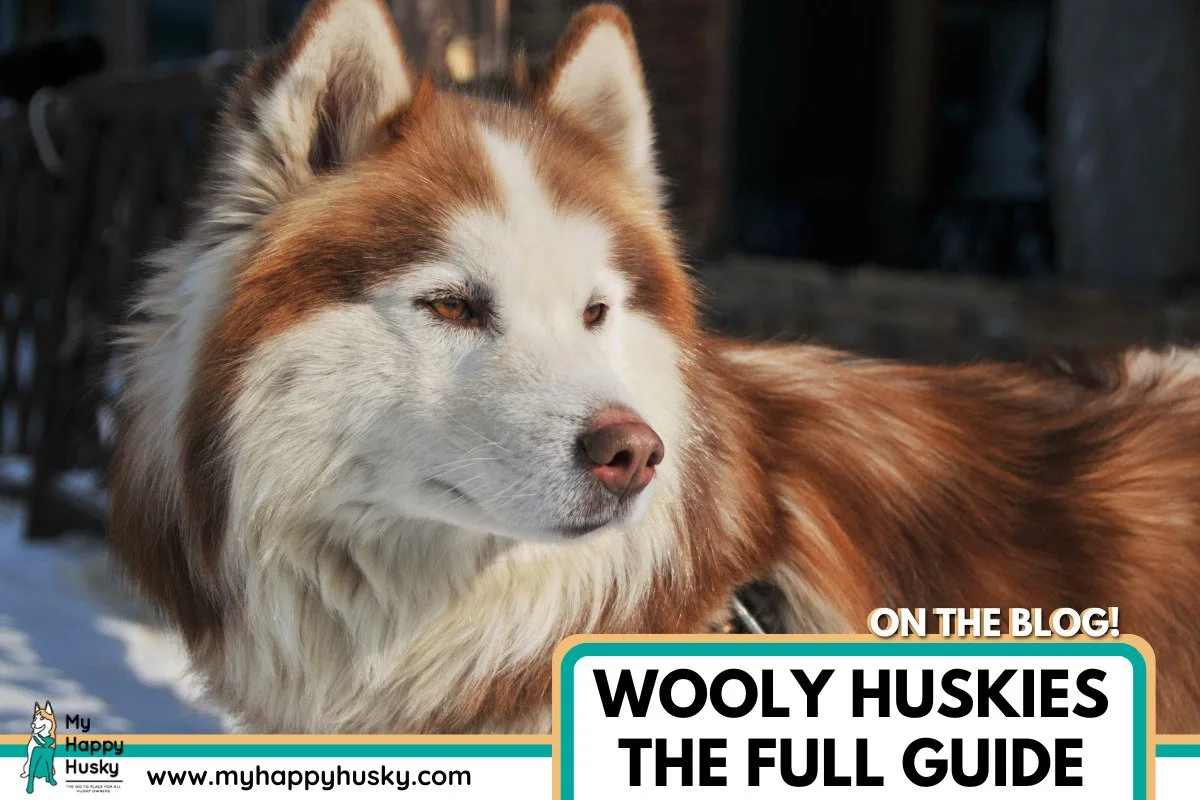
What is a Wooly Husky?
The Wooly Husky is a variety of the popular Siberian Husky.
The term “Wooly” refers to an uncommon coat variation characterized by significantly longer and thicker fur than your average Siberian Husky. And we’re talking A LOT longer!
These dogs are nothing short of stunning, their luxurious coats granting them a majestic, lion-like aura.
However, it’s important to note that this long, wooly coat isn’t what you’d typically find on most Siberian Huskies. In fact, it’s considered a genetic mutation.
Are They a Separate Breed?
Despite their distinctive coats, Wooly Huskies are not a separate breed. They’re Siberian Huskies through and through, just with an atypical coat.
This difference is purely cosmetic, much like hair color variation in humans. A Wooly Husky will still have the same Husky temperament, love for activity, and penchant for mischief that the breed is known for.
In the eyes of breed standards, such as those set by the American Kennel Club, a Wooly Husky is still a Siberian Husky.
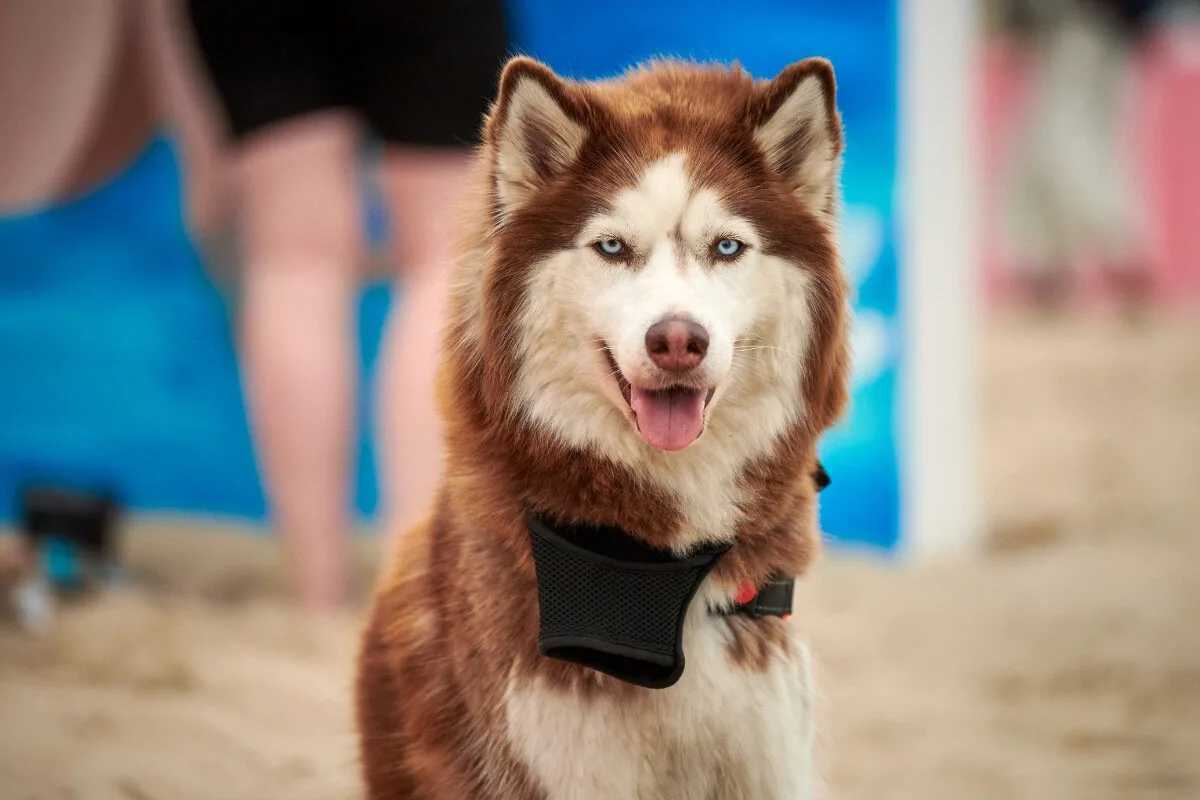
How are Wooly Huskies Bred?
The Wooly Husky is the result of a recessive gene that causes the coat to grow longer and fuller than normal.
- Wooly-to-Wooly Breeding: If two Wooly Huskies breed, all puppies in the resulting litter will be Wooly Huskies.
- Carrier-to-Carrier Breeding: When two standard Huskies, both carriers of the wooly gene but not Wooly Huskies themselves, breed, their litter will be a combination of standard Huskies carrying the wooly gene and Wooly Huskies.
- Wooly-to-Carrier Breeding: If a Wooly Husky is bred with a standard Husky carrying the wooly gene, the resulting litter will typically be half Wooly Huskies and half standard Huskies that are carriers of the wooly gene.
This means that both parent Huskies must carry this gene to produce a Wooly Husky. However, breeding for this specific trait is generally discouraged as it goes against breed standards.
Additionally, while the wooly coat is undeniably beautiful, it can pose certain health and practical challenges, which we’ll discuss later.
Related: Short Haired Huskies: What You Need to Know About Them
Wooly Husky of The Day!
Meet Apollo, the beautiful wooly husky
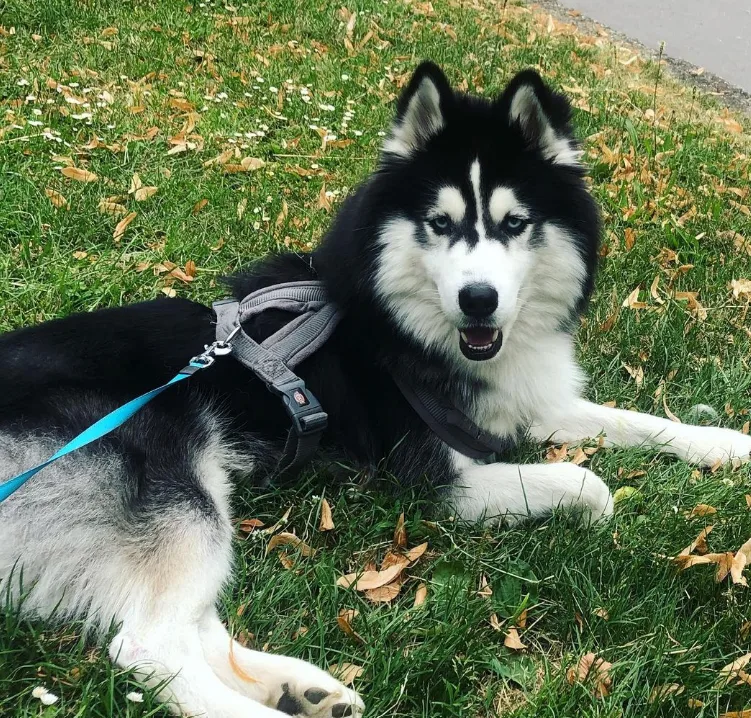
How a Wooly Coat is Different From a Regular Husky Coat
A standard Husky coat is double-layered, with a top layer of short, thick guard hairs to protect against weather, and an undercoat of softer, insulating fur. In a Wooly Husky, both of these layers grow longer.
This results in a strikingly fluffy coat that can easily reach 3-4 inches in length. It’s a far cry from the more sleek and streamlined appearance of a typical Siberian Husky.
Identifying a Wooly Husky vs. Normal Husky
Identifying a Wooly Husky is fairly straightforward, thanks to their distinctive coat.
While normal Siberian Huskies have a moderate length double-coat, a Wooly Husky’s coat is long and so plush that it stands off from their body. This is quite easy to detect.
In addition, a Wooly Husky’s longer fur around the face and neck creates an appearance of a mane, which can help distinguish them from their shorter-coated counterparts.
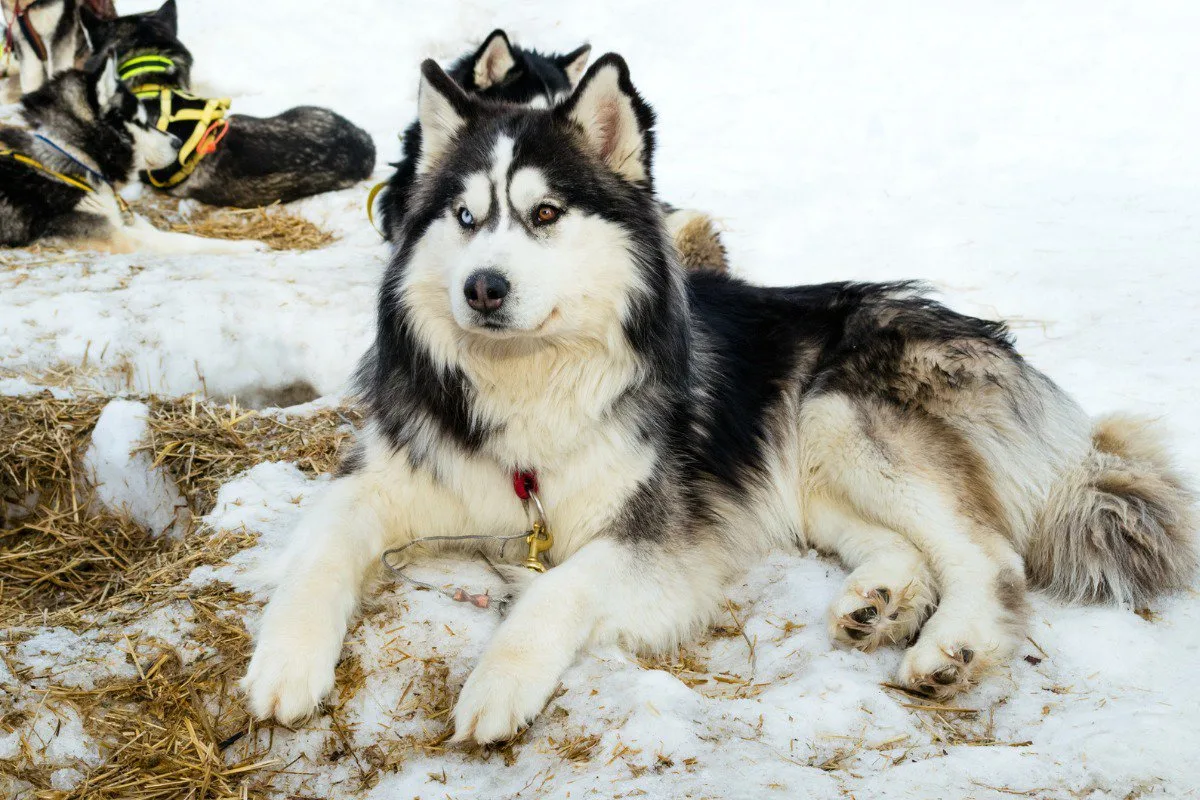
Identifying a Wooly Husky at the Breeder’s
It can be challenging to determine whether a Husky puppy is going to grow into a Wooly Husky, as all Husky puppies are quite fluffy.
➡️ A few signs and considerations to keep in mind:
- Parentage: The most reliable way to determine if a Husky puppy is likely to develop a wooly coat is to examine the parents. Both parents should exhibit the long, fluffy wooly coat, as this trait is determined by a recessive gene. If both parents are Wooly Huskies, there’s a chance the puppy will be as well.
- Coat Texture: Wooly Husky puppies may have a noticeably softer, fluffier coat compared to their standard counterparts, even at a young age. Their fur often has a more feathered or wool-like texture.
- Early Signs of a ‘Mane’: While it can be difficult to tell with very young puppies, a Wooly Husky often starts to show signs of longer fur around the neck, resembling a small mane, even from a few months old.
- Breeder’s Expertise: An experienced breeder should be able to give you a good idea about whether a puppy will develop a wooly coat. They know their dogs and understand the genetics at play.
This section also highlights the importance of going with a reputable breeder and one that can be trusted on their word.
Are Wooly Huskies Rare?
Yes, Wooly Huskies are indeed rare.
As mentioned earlier, the gene responsible for the wooly coat is recessive, meaning both parents need to carry it for a puppy to potentially have this coat type.
Moreover, since breeding for this trait is generally discouraged by breed organizations due to potential health and practicality issues, Wooly Huskies are few and far between.
Is This Coat Better or Worse for Huskies (Pros and Cons)
While a wooly coat can make a Husky look incredibly majestic, it comes with its share of challenges.
The thick coat can overheat a Husky in warm weather, leading to potential health issues. Conversely, it can mat and trap ice in cold weather, offering less effective insulation.
Let’s run through the main pros and cons below:
➡️ Pros:
- Striking Appearance: There’s no denying that the wooly coat makes these Huskies stand out, adding to their overall appeal.
- Possible Cold Weather Protection: A wooly coat might offer slightly more protection in extremely cold environments, though a standard Husky coat is generally quite sufficient.
➡️ Cons:
- Overheating Risk: Wooly Huskies can overheat easily in warm weather, which can lead to potential health issues.
- Coat Matting: The long, thick fur can mat and trap ice in cold weather, providing less effective insulation than a standard Husky coat.
- Increased Grooming: The wooly coat requires more frequent and meticulous grooming to prevent tangling and matting.
- Health Risks: Some potential health issues are associated with the wooly coat, including skin problems due to trapped moisture.
Considering these factors, most breeders and Husky enthusiasts believe the standard Husky coat is better suited for the breed’s overall well-being and lifestyle.
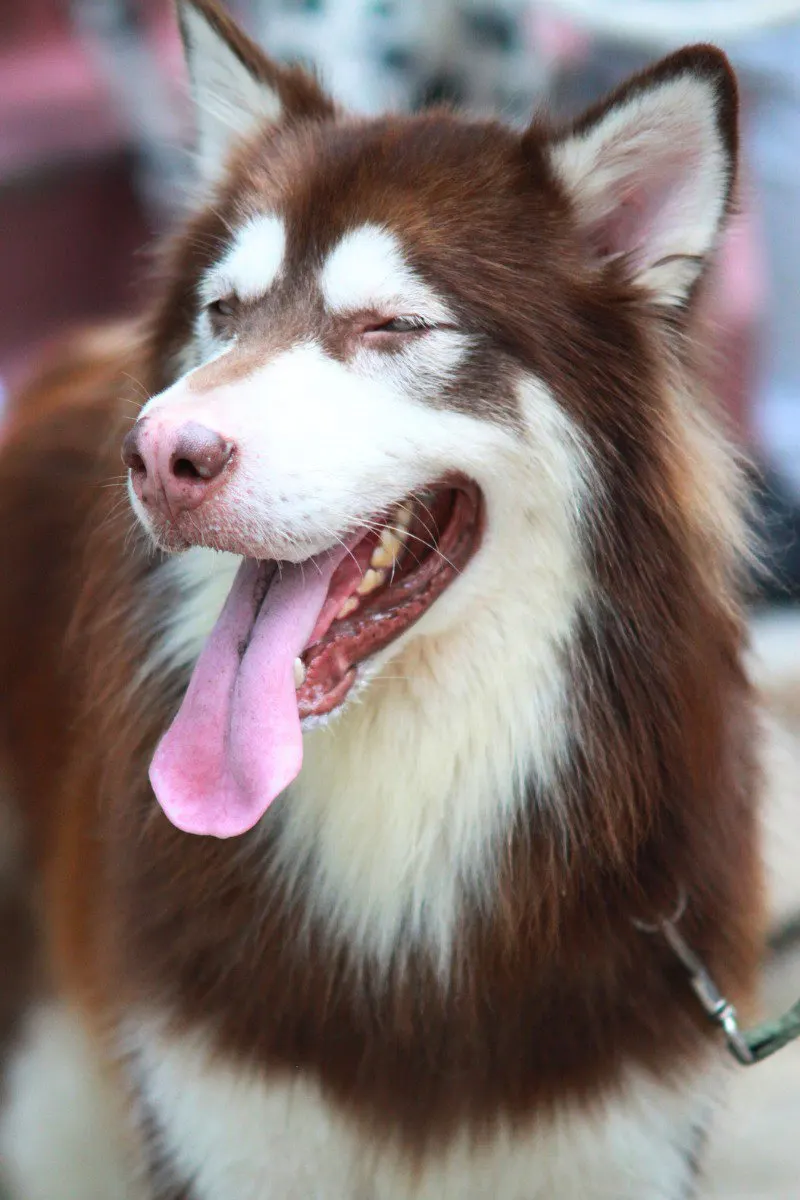
Grooming Advice for Wooly Huskies
Wooly Huskies require a significant amount of grooming to keep their beautiful coats in top condition.
➡️ Here are a few key points to remember:
- Daily brushing: Brush your Wooly Husky at least 10 minutes daily to keep on top of shedding, and to prevent matting and tangling.
- Bathing: Don’t over-bathe as it can dry out their skin. Bathe your Wooly Husky once every 3-4 months, or whenever they get particularly dirty.
- Temperature control: Be mindful of temperature. Wooly Huskies can overheat easily due to their dense coat, so ensure they have access to shade and fresh water during warmer weather.
Unfortunately, many wooly huskies find themselves in shelters, which is partly due to their long coat and owners not being fully ready for what’s to come.
Owners that get this gorgeous dog more for their looks often skim past the reality of the maintenance required with such a dog.
Do Wooly Huskies Cost More?
As Wooly Huskies are rarer than standard Siberian Huskies, they can sometimes cost more. The price of a puppy will largely depend on the breeder, the puppy’s lineage, and local demand.
➡️ On average, we see wooly huskies going from anywhere between $1000-$2500 USD.
However, potential Wooly Husky owners should focus more on finding reputable breeders who prioritize health and temperament over a specific coat type.
Wooly Husky vs. Alaskan Malamute
At a glance, a Wooly Husky might be mistaken for an Alaskan Malamute due to their fluffy coats.
However, they are different breeds with distinct traits. Alaskan Malamutes are generally larger and heavier than Siberian Huskies, with a more solid body and a less wolf-like appearance.
Alaskan Malamutes also typically have a longer coat than a standard Siberian Husky, but it’s the Wooly Husky that might most closely mimic the Malamute’s fluffiness.
Last Thoughts about Wooly Huskies
In conclusion, the Wooly Husky is a captivating variant of the Siberian Husky breed. Their wooly coats make them stand out and add to their appeal. However, this unique coat also requires extra care and can present additional challenges.
When considering a Wooly Husky, it’s essential to think beyond their stunning looks. Like all Huskies, they require a lot of exercise, mental stimulation, and social interaction. They’re a high-energy, fun-loving breed that thrives with active families who can meet their needs.
Before bringing one home, make sure you’re prepared to handle not just their grooming needs but also their boundless energy and spirited nature. No matter their coat type, a Husky is a wonderful addition to the right home!
To learn more about this topic, you might want to visit trusted pet websites like the American Kennel Club or The Siberian Husky Club of America. These resources provide a wealth of knowledge about the breed’s specific needs, health issues, and more.
Disclaimer
The advice given in this article is for educational purposes only and does not constitute professional advice in any context. Before making any decisions that may affect the health and/or safety of your dog, you should always consult a trained veterinarian in your local area. For the FULL disclaimer Visit HereCopyright Notice: The content produced and published on My Happy Husky is unique and original. My Happy Husky makes an active effort to search for plagiarized content using plagiarism detection software. If plagiarized content is found, action will be taken.
